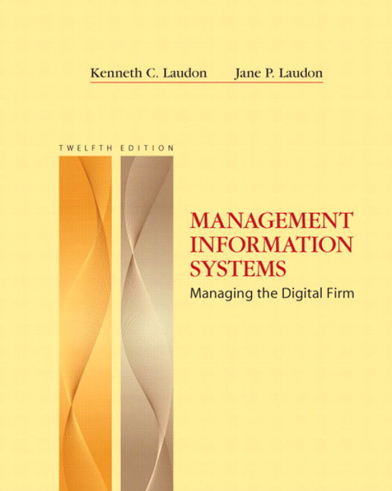

英语原文共 677 页,剩余内容已隐藏,支付完成后下载完整资料
Foundations of Business Intelligence: Databases and Information Management
商业智能基础:数据库和信息管理
Opening Case: BART Speeds Up with a New IT Infrastructure
Right now you are most likely using an RR Donnelley product. Chicago-based RR Donnelley is a giant commercial printing and service company providing printing services, forms and labels, direct mail, and other services. This textbook probably came off its presses. The companyrsquo;s recent expansion has been fueled by a series of acquisitions, including commercial printer Moore Wallace in 2005 and printing and supply chain management company Banta in January 2007. RR Donnelleyrsquo;s revenue has jumped from $2.4 billion in 2003 to over $9.8 billion today.
However, all that growth created information management challenges. Each acquired company had its own systems and its own set of customer, vendor, and product data. Coming from so many different sources, the data were often inconsistent, duplicated, or incomplete. For example, different units of the business might each have a different meaning for the entity“customer.” One might define “customer” as a specific billing location, while another might define “customer” as the legal parent entity of a company. Donnelley had to use time-consuming manual processes to reconcile the data stored in multiple systems in order to get a clear enterprise-wide picture of each of its customers, since they might be doing business with several different units of the company. These conditions heightened inefficiencies and costs.
RR Donnelley had become so big that it was impractical to store the information from all of its units in a single system. But Donnelley still needed a clear single set of data that was accurate and consistent for the entire enterprise. To solve this problem, RR Donnelley turned to master data management (MDM). MDM seeks to ensure that an organization does not use multiple versions of the same piece of data in different parts of its operations by merging disparate records into a single authenticated master file. Once the master file is in place, employees and applications access a single consolidated view of the companyrsquo;s data. It is especially useful for companies such as Donnelley that have data integration problems as a result of mergers and acquisitions.
Implementing MDM is a multi-step process that includes business process analysis, data cleansing, data consolidation and reconciliation, and data migration into a master file of all the companyrsquo;s data. Companies must identify what group in the company “owns” each piece of RR DONNELLEY TRIES TO MASTER ITS DATA data and is responsible for resolving inconsistent definitions of data and other discrepancies. Donnelley launched its MDM program in late 2005 and began creating a single set of identifiers for its customer and vendor data. The company opted for a registry model using Purismarsquo;s Data Hub in which customer data continue to reside in the system where they originate but are registered in a master “hub” and cross-referenced so applications can find the data. The data in their source system are not touched.
Nearly a year later, Donnelley brought up its Customer Master Data Store, which integrates the data from numerous systems from Donnelley acquisitions. Data that are outdated, incomplete, or incorrectly formatted are corrected or eliminated. A registry points to where the source data are stored. By having a single consistent enterprise-wide set of data with common definitions and standards, management is able to easily find out what kind of business and how much business it has with a particular customer to identify top customers and sales opportunities. And when Donelley acquires a company, it can quickly see a list of overlapping customers.
RR Donnelleyrsquo;s experience illustrates the importance of data management for businesses. Donnelley has experienced phenomenal growth, primarily through acquisitions. But its business performance depends on what it can or cannot do with its data. How businesses store, organize, and manage their data has a tremendous impact on organizational effectiveness.
The chapter-opening diagram calls attention to important points raised by this case and this chapter. Management decided that the company needed to centralize the management of the companyrsquo;s data. Data about customers, vendors, products, and other important entities had been stored in a number of different systems and files where they could not be easily retrieved and analyzed. They were often redundant and inconsistent, limiting their usefulness. Management was unable to obtain an enterprise-wide view of all of its customers at all of its acquisitions to market its products and services and provide better service and support.
In the past, RR Donnelley had used heavily manual paper processes to reconcile its inconsistent and redundant data and manage its information from an enterprise-wide perspective. This solution was no longer viable as the organization grew larger. A more appropriate solution was to identify, consolidate, cleanse, and standardize customer and other data in a single master data management registry. In addition to using appropriate technology, Donnelley had to correct and reorganize the data into a standard format and establish rules, responsibilities, and procedures for updating and using the data.
A master data management system helps RR Donnelley boost profitability by making it easier to identify customers and sales opportunities. It also improves operational efficiency and decision making by having more accurate and complete customer data available and reducing the time required to reconcile redundant and inconsistent data.
开篇案例:巴特加快了一个新的IT基础设施
现在你最可能使用的是RR Donnelley产品。芝加哥的RR Donnelley是一家大型商业印刷和服务公司,提供印刷服务、表格和标签、直邮和其他服务。这本教科书可能是刚出版的。该公司最近的扩张得益于一系列的收购,包括2005年的商用打印机Moore Wallace和2007年1月的印刷和供应链管理公司Banta。RR Donnelley公司的收入从2003年的24亿美元增长到今
剩余内容已隐藏,支付完成后下载完整资料
资料编号:[235851],资料为PDF文档或Word文档,PDF文档可免费转换为Word
以上是毕业论文外文翻译,课题毕业论文、任务书、文献综述、开题报告、程序设计、图纸设计等资料可联系客服协助查找。


